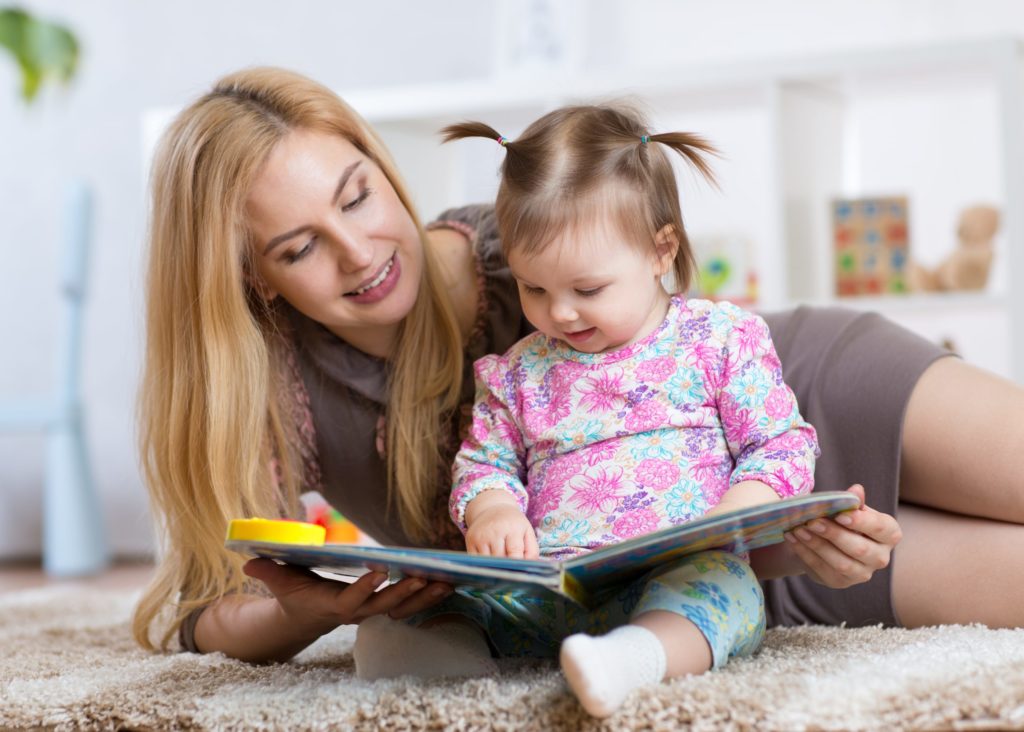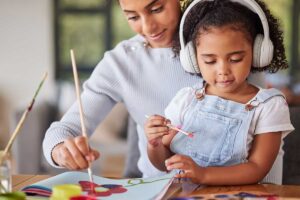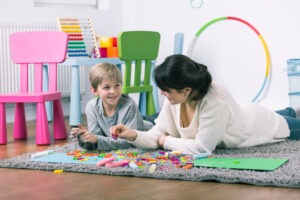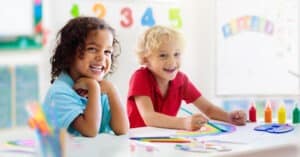Your two-year-old’s speech and language development
As a mom and a speech therapist, I always want to make sure that I set my children (and the children that I work with) up for success! Over the next few months, I will be creating a “Part Two” to all of our milestone blogs so that you not only know what to expect but also how to help your child achieve the milestones!
I decided to start with the 2-year-old milestones as this tends to be an age that I get asked about a lot! For more information about 2-year-old milestones, please click here.
For each milestone, I have included some activities and tips to support your child’s development.
1. Expressive Vocabulary: Books, books, and more books! Books are going to expose your child to a variety of new words! The pictures provide additional visual support, and because toddlers love to read books over and over, they are going to get the exposure needed to add new words to their vocabulary. Talking through daily routines will also develop your child’s expressive vocabulary. I find it helpful to think through the routine ahead of time and to pick out a few verbs, nouns, adjectives that you want to target. For example, let’s take mealtime. The following are words that I would try to talk about during breakfast, lunch and/or dinner:
- Verbs: eat, drink, mix, wipe/wash
- Nouns: favorite foods/drinks, fork/spoon, plate
- Adjectives/concepts: colors, one/two, yummy, big/small
In addition to books and daily routines, I LOVE puzzles! You can work on lots of different nouns, but you can also work on simple actions and concepts too (e.g. in/out, top/bottom, want/need, etc.) My other favorite toys for this age include:
2. Combining Words: Using the activities and toys above, model how words go together! Encourage your child to imitate short phrases when they are able to use words independently. For example, if your child labels his/her “milk,” encourage him/her to say, “Drink milk” or “Want milk.” If your child requests puzzle pieces by name, try having your child request, “Bunny in” or “Cat out.”
3. Speech Intelligibility: You can try to shape your child’s productions of various words by providing a model. Encourage your child to look at your mouth when you are saying words. You may also need to simplify words in order to get a closer approximation. For example, “water” may need to be “wawa.” If your child says, “Bae-ee” for “baby” (i.e. drops the second /b/ sound), see if your child can imitate each syllable first before combining the syllables (e.g. “bae” and “bee”). Speech sounds to work on at this age include: /b, p, m, d, t, n, h, w/ and vowels.
4. Receptive Language: Books are going to be super helpful when working on receptive language too! Have your child point to objects that you name. You can also point to pictures as you read to support your child’s understanding of new words. Be sure to work on words other than nouns! Remember, it’s not just about quantity. The variety of words is what’s going to help your child’s language grow! While reading, you may ask your child, “Can you find the boy who is cleaning?” or “Show me the blue shoes.” Since many toddlers like routines, we often get stuck using the same words or giving the same directions. Try to use new words and change the direction. You can even make it super silly (e.g. Instead of “Put your shoes on your feet” you could say “Put your shoes on your head”). You can also add modifiers. For example, instead of asking your child to “Get the ball,” try asking him/her to “Get the red ball.”
5. Socialization: As mentioned in the milestone blog, modeling social skills can be so helpful at this age! Show your child how to take turns or share toys. My daughter is GREAT at telling me to share my food, but when it comes to sharing hers, forget about it! In these situations, dad and I will share with each other, and we will praise each other as well. When we are playing together, I will use simple questions, such as “Can I have a turn?” or “Can I have the [toy]?” She watches us and while she may not engage in sharing or taking turns, the exposure is very helpful! I also try to work on sharing and turn-taking when we have playdates. Timers can be really helpful for children who have trouble with this!
Tanya Topper, MS, CCC-SLP








